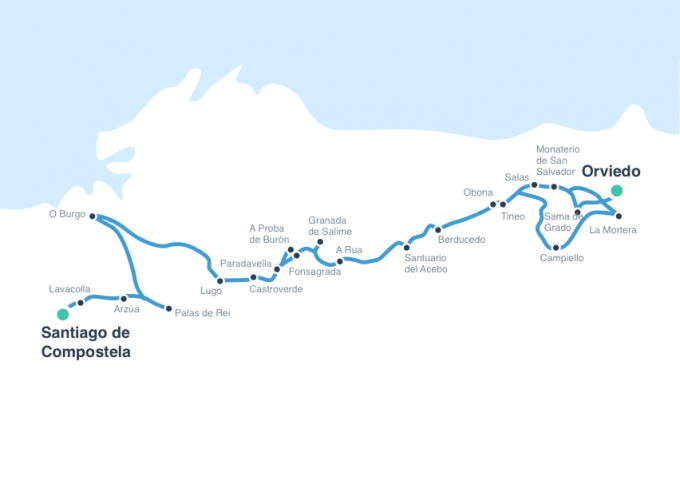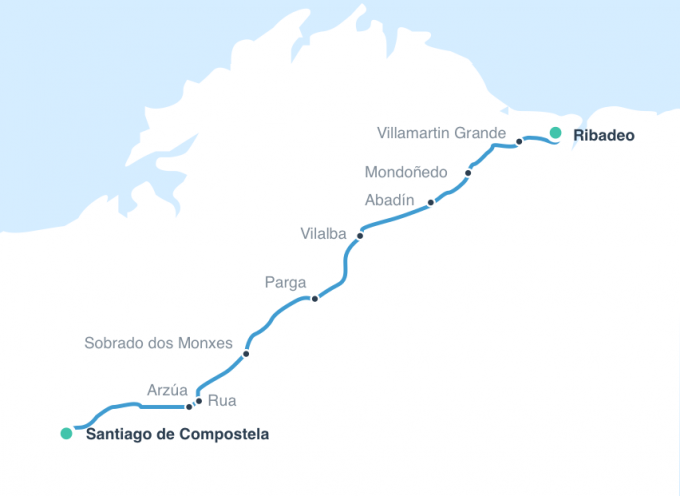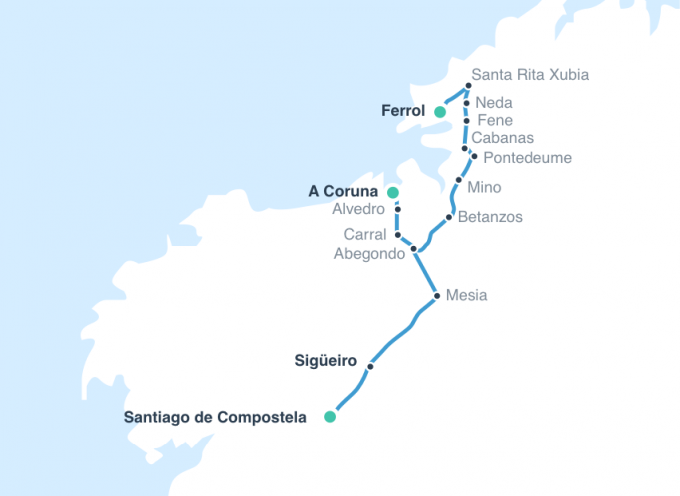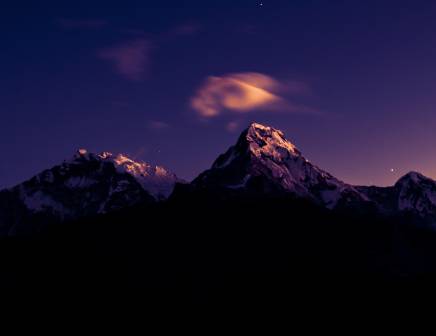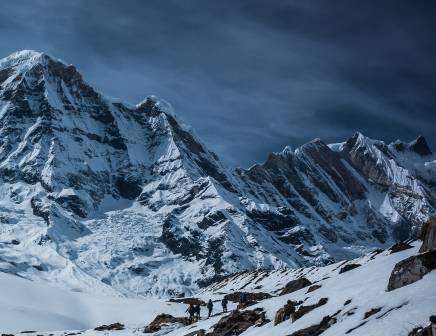
Camino de Santiago Training Guide
Walkers on the Camino de Santiago need to prepare for long distances, harsh path conditions and carrying a pack. Read here how to train for this hike, what to pack and how to plan your trip.
Camino de Santiago Statistics 2018
Here some statistics about the starting points of Camino de Santiago in 2018.
| STARTING POINT | N° OF DEPARTURES | % OF THE TOTAL |
|---|---|---|
| Sarria | 8,486 | 23,84% |
| Saint Jean Pied de Port | 5,891 | 16,55% |
| Oporto | 3,340 | 9,38% |
| Tui | 1,503 | 4,22% |
| Ferrol | 1,212 | 3,40% |
| Leon | 1,121 | 3,15% |
| Oporto Costa | 937 | 2,63% |
| Cebreiro | 887 | 2,49% |
Camino de Santiago tours & reviews
Camino de Santiago Information
How can I get to Camino de Santiago?
This, of course, depends on the route you’re taking. Flying to the city closest to the trailhead is certainly preferable if you’re coming in from Australia, USA and the UK. However, UK travellers may travel by bus or rail to the towns of Ferrol, Oviedo and St. Jean Pied de Port. Learn more.
When should I walk the Camino de Santiago?
The absence of extreme weather changes in the area makes Camino de Santiago’s routes walkable year-round. Though June through September may be its busiest months, more than one thousand people still make the hike during the cold winter months of December, January and February. Learn more.
What permits, visas, vaccinations and insurance do I need?
Though a permit isn’t necessary, you must obtain your Credencial del Peregrino or Pilgrim Passport at the start of your trip and get it stamped along the way. The stamps are proof that you walked the 100 kms necessary to obtain the completion certificate in Santiago de Compostela. Learn more.
Do I need a guide to walk the Camino?
While you don’t need a guide to hike any of the Camino de Santiago routes, having one will reduce the burden of planning. Going on a guided hike would give you the benefits of having experienced trip planners arrange things like accommodation, food, luggage transport and airport transfers. Learn more.
What should I pack and what equipment do I need?
Along the way, you'll be able to stop in towns to refuel. Carrying a day pack of your personal essentials, change of clothes, a two-litre water bottle, a first aid kit, and your passport and Pilgrim Passport will suffice. Invest in a good pair of hiking shoes and walking poles. Learn more.
Can I walk the Camino during Christmas time?
While most pilgrims prefer to walk the Camino de Santiago from Spring to Autumn, the number of pilgrims who walk during winter time is increasing. But be aware there will be less pilgrims on the way around those dates so you might miss out on the social aspect of the Camino.
Camino de Santiago Routes & Maps

Camino Portugues
The Portuguese Way, the second most popular route, starts in either Lisbon or Porto and takes hikers from Portugal to Spain. Considerably longer, the Lisbon hike starts at the Lisbon Cathedral and passes through Caldas da Rainha, the Alcobaca Monastery and Porto before crossing several rivers on its way north to Spain.Read more
Distance: 610 km (380 mi)
Average duration: 21-30 days
Average difficulty/success rate: The Portuguese Way is relatively moderate. Minor elevation gains work to your advantage, though concrete and cobblestone roads, which it has its fair share of, can put a strain on the walk. The success rate is high.

Camino Primitivo
A few ups and downs, rocky or muddy sections and the frequency of the paved roads make Camino Primitivo one of Camino de Santiago’s most challenging routes. It is, however, worth tackling, if only for the challenge and for the fact that it’s the oldest one. You will be rewarded with breathtaking views.Read more
Distance: 321 km (199 mi)
Average duration: 12-15 days
Average difficulty/success rate: Camino Primitivo has its fair share of challenging climbs and descents as well as paved sections, making it a difficult route. Still, if you take your time, the success rate is high.

Camino de Finisterre
Once you’ve reached Camino de Santiago, you might continue on to the “end of the world”. Cape Finisterrae is one of Europe’s westernmost points, thus the name. Adding 90 kilometres to the trip along an ancient route, perhaps even another 29 to Muxia, might just be an epic way to wrap up the journey.Read more
Distance: 90 km (55 mi), 117 km (73 mi) to Muxia
Average duration: 2-4 days
Average difficulty/success rate: Because it’s a shorter hike and offers spectacular views, the road to Finisterrae is a moderate route to take on. The success rate is certainly high, even if fewer people traverse it, choosing to end their trip at the cathedral.

Camino Frances
Is it a wonder why the French Way is favoured by most Camino de Santiago pilgrims? It’s not just the most traditional route, with a lot of history surrounding it. It also boasts lush landscapes, charming towns and great infrastructure along the way, taking travellers through the beautiful Iberian Peninsula for a month.Read more
Distance: 772 km (480 mi)
Average duration: 4 weeks
Average difficulty/success rate: Due to the excellent infrastructure and facilities along the way, not only is Camino Frances an enjoyable hike, it’s also a fairly moderate hike. So long as you take a couple of days to rest along the way, you are guaranteed to make it to the end.
Camino del Norte
For 827 kilometres, Camino del Norte stretches from the town of Irun in Basque Country to Santiago de Compostela, following Spain’s northern coastline. It’s not only the longest route in the network, it is also the least travelled and has fewer facilities, making it ideal for thru-hikers who prefer solitude and a challenge.
Distance: 827 km (514 mi)
Average duration: 36 nights
Average difficulty/success rate: A little more than a month and a more rigid schedule could be challenging for less experienced hikers. The success rate is generally good, so long as you train beforehand and can tackle more than 21 miles a day.
Camino Inglés
A favourite among hikers arriving from the British Isles and northern Europe, the English Way starts from the City of Ferrol and runs straight south to Camino de Santiago. Though short, it does boast longer sections and major elevation changes, making it a challenge for the more casual walkers.
Distance: 119 km (74 mi)
Average duration: 6 nights
Average difficulty/success rate: This ranks as medium to high in difficulty, though chances of completing are very good because of its short distance.
Other hikes you might like...
Discover the world with our vast selection of multi-day hiking and trekking tours.
 The Annapurna Circuit really is Nepal's standout trek, where our travelers keep telling us about their incredible experiences crossing dramatic mountain passes and connecting with local villages. Getting up early to catch sunrise at Poon Hill is a highlight - watching first light hit the Dhaulagiri and Annapurna peaks makes that pre-dawn wake-up totally worth the effort. What makes this route special is how you get to know the local culture while hiking at altitude. Our Sherpa guides like Tenzi, Bhakta and also Pemba share deep local knowledge about traditions, wildlife and the ancient paths they've walked countless times. You'll move through such different landscapes - from thick forests filled with rhododendrons to high desert plateaus above the tree line. The tea houses along the way offer a warm welcome and good local food after long days on the trail. Our trekkers often tell us their best memories come from joining local puja ceremonies and learning why these peaks matter so much in Hindu culture as the goddess of nourishment's home.See more
The Annapurna Circuit really is Nepal's standout trek, where our travelers keep telling us about their incredible experiences crossing dramatic mountain passes and connecting with local villages. Getting up early to catch sunrise at Poon Hill is a highlight - watching first light hit the Dhaulagiri and Annapurna peaks makes that pre-dawn wake-up totally worth the effort. What makes this route special is how you get to know the local culture while hiking at altitude. Our Sherpa guides like Tenzi, Bhakta and also Pemba share deep local knowledge about traditions, wildlife and the ancient paths they've walked countless times. You'll move through such different landscapes - from thick forests filled with rhododendrons to high desert plateaus above the tree line. The tea houses along the way offer a warm welcome and good local food after long days on the trail. Our trekkers often tell us their best memories come from joining local puja ceremonies and learning why these peaks matter so much in Hindu culture as the goddess of nourishment's home.See more The heart of Mount Everest tours revolves around two defining experiences - getting to Base Camp and taking in the sweeping mountain panorama from Kala Patthar viewpoint. You'll walk trails that weave through genuine Sherpa villages where local culture comes alive, and many of our guests tell us the prayer ceremony at Tengboche Monastery touched them deeply. If you're pressed for time but want to see Everest up close, helicopter treks give you remarkable bird's-eye views of the world's highest peak and the surrounding Himalayan giants. Most people come back saying it changed their life, especially if they went during spring from March to May when rhododendrons carpet the slopes and the weather tends to give you the clearest mountain views. What often catches our trekkers by surprise are the traditional Buddhist ceremonies and natural connections they make with Sherpa communities along the way.See more
The heart of Mount Everest tours revolves around two defining experiences - getting to Base Camp and taking in the sweeping mountain panorama from Kala Patthar viewpoint. You'll walk trails that weave through genuine Sherpa villages where local culture comes alive, and many of our guests tell us the prayer ceremony at Tengboche Monastery touched them deeply. If you're pressed for time but want to see Everest up close, helicopter treks give you remarkable bird's-eye views of the world's highest peak and the surrounding Himalayan giants. Most people come back saying it changed their life, especially if they went during spring from March to May when rhododendrons carpet the slopes and the weather tends to give you the clearest mountain views. What often catches our trekkers by surprise are the traditional Buddhist ceremonies and natural connections they make with Sherpa communities along the way.See more Soaring high in the Alps, Mont Blanc offers spectacular views and thrilling hikes. Scale its snowy peaks, ski down its pristine slopes, or explore scenic trails. Visit Chamonix for its alpine charm, boutiques, and fine dining.See more
Soaring high in the Alps, Mont Blanc offers spectacular views and thrilling hikes. Scale its snowy peaks, ski down its pristine slopes, or explore scenic trails. Visit Chamonix for its alpine charm, boutiques, and fine dining.See more The Rocky Mountains showcase their rugged soul through Yellowstone and Grand Teton National Parks. Our travelers tell us how Old Faithful's precise eruptions and close encounters with grizzlies, black wolves and roaming bison create lasting memories. Moving southwest, Monument Valley's red sandstone tells a different story of the American West, where Navajo guides share generations of knowledge during jeep tours across their ancestral desert terrain. The curved walls of Antelope Canyon have become a photographer favorite - our groups often spend hours capturing the light beams that filter through the narrow passages. Each season brings its own magic: fall paints aspen groves in pure gold, while spring scatters wildflowers across high meadows. For wildlife viewing, our visitors find the quiet hours around sunrise and sunset reward them with natural glimpses of elk, moose and also bears going about their daily routines.See more
The Rocky Mountains showcase their rugged soul through Yellowstone and Grand Teton National Parks. Our travelers tell us how Old Faithful's precise eruptions and close encounters with grizzlies, black wolves and roaming bison create lasting memories. Moving southwest, Monument Valley's red sandstone tells a different story of the American West, where Navajo guides share generations of knowledge during jeep tours across their ancestral desert terrain. The curved walls of Antelope Canyon have become a photographer favorite - our groups often spend hours capturing the light beams that filter through the narrow passages. Each season brings its own magic: fall paints aspen groves in pure gold, while spring scatters wildflowers across high meadows. For wildlife viewing, our visitors find the quiet hours around sunrise and sunset reward them with natural glimpses of elk, moose and also bears going about their daily routines.See more











